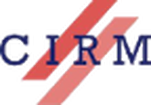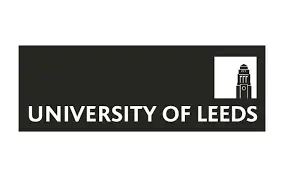CONFERENCE
Frieze patterns in algebra, combinatorics and geometry
Frises en algèbre, combinatoire et géométrie
12 – 16 May, 2025
Scientific Committee
Comité scientifique
Thorsten Holm (Leibniz University Hannover)
Peter Jørgensen (Aarhus University)
Bethany Rose Marsh (University of Leeds)
Sergei Tabachnikov (Pennsylvania State University)
Organizing Committee
Comité d’organisation
Karin Baur (University of Leeds)
Michael Cuntz (Leibniz University Hannover)
Eleonore Faber (University of Graz)
Pierre-Guy Plamondon (Université de Versailles Saint-Quentin-en-Yvelines)
Friezes, introduced 50 years ago by Coxeter, are patterns of integers defined by a simple, local condition. They consist of a finite (or infinite) number of rows written in a lattice, starting with a row of 0s and a row of 1s and satisfying a local SL2-rule: for any four neighbours a, b, c, d forming a diamond we require ad − bc = 1.
Since the discovery of links to cluster algebras of type A, a plethora of generalisations have been studied in the last decades.
With this workshop, we will provide a platform to establish new links between friezes and research areas in geometry, algebra and combinatorics.
Coxeter a introduit la notion d’une frise de nombres dans les années 70. Les frises forment des structures définies par une règle locale. Une frise consiste en un nombre fini ou infini de lignes de nombres, arrangés dans une grille, avec des 0 dans la première ligne, des 1 dans la deuxième. La règle locale est la suivante: Si a, b, c, d sont des élèments voisins, a situé à l’ouest, d à l’est, b au nord, c au sud, on asssume ad − bc = 1. Depuis la découverte des liens avec la théorie des algèbres amassées en type An, plusieurs généralisations ont été découvertes.
Cette conférence va servir comme point de départ pour découvrir et établir de nouveaux liens entres la théorie des frises et des domaine de recherche en géométrie, algèbre et combinatoire.
SHORT-COURSES
Valentin Ovsienko (Université de Reims Champagne Ardenne) Frieze patterns from a geometric point of view: projective geometry and difference equations
Khrystyna Serhiyenko (University of Kentucky) Frieze patterns and representation theory
Ian Short (The Open University) Frieze patterns and Farey complexes
RESEARCH TALKS
Esther Banaian (University of California – Riverside) Friezes and Catalan Combinatorics
Özgür Esentepe (University of Graz) Penrose tilings and Friezes
Ana Garcia Elsener (National University of Mar del Plata) Transforming Type D into type A friezes
Bethany Rose Marsh (University of Leeds) Reduction of Grassmannian mesh friezes
Sophie Morier-Genoud (Université de Reims Champagne Ardenne) Linear and symplectic 2-friezes
Greg Muller (University of Oklahoma) The finiteness and enumeration of Dynkin friezes
Anja Sneperger (University of Leeds) Some determinants and relations in Heronian friezes
Lucas Surmann (Leibniz University Hannover) Counting tame SL3- and some SL4-frieze patterns over finite fields
Pavel Tumarkin (Durham University) Hyperbolic geometry of friezes
Katie Waddle (University of Michigan) Spherical friezes
Emine Yildirim (University of Leeds) Growth of frieze patterns
Andrei Zabolotskii (The Open University) Laurent-Shmaurent, integer friezes, and polygon folding
Robin Zhang (Massachusetts Institute of Technology) A positive dichotomy between frieze patterns and Diophantine geometry





